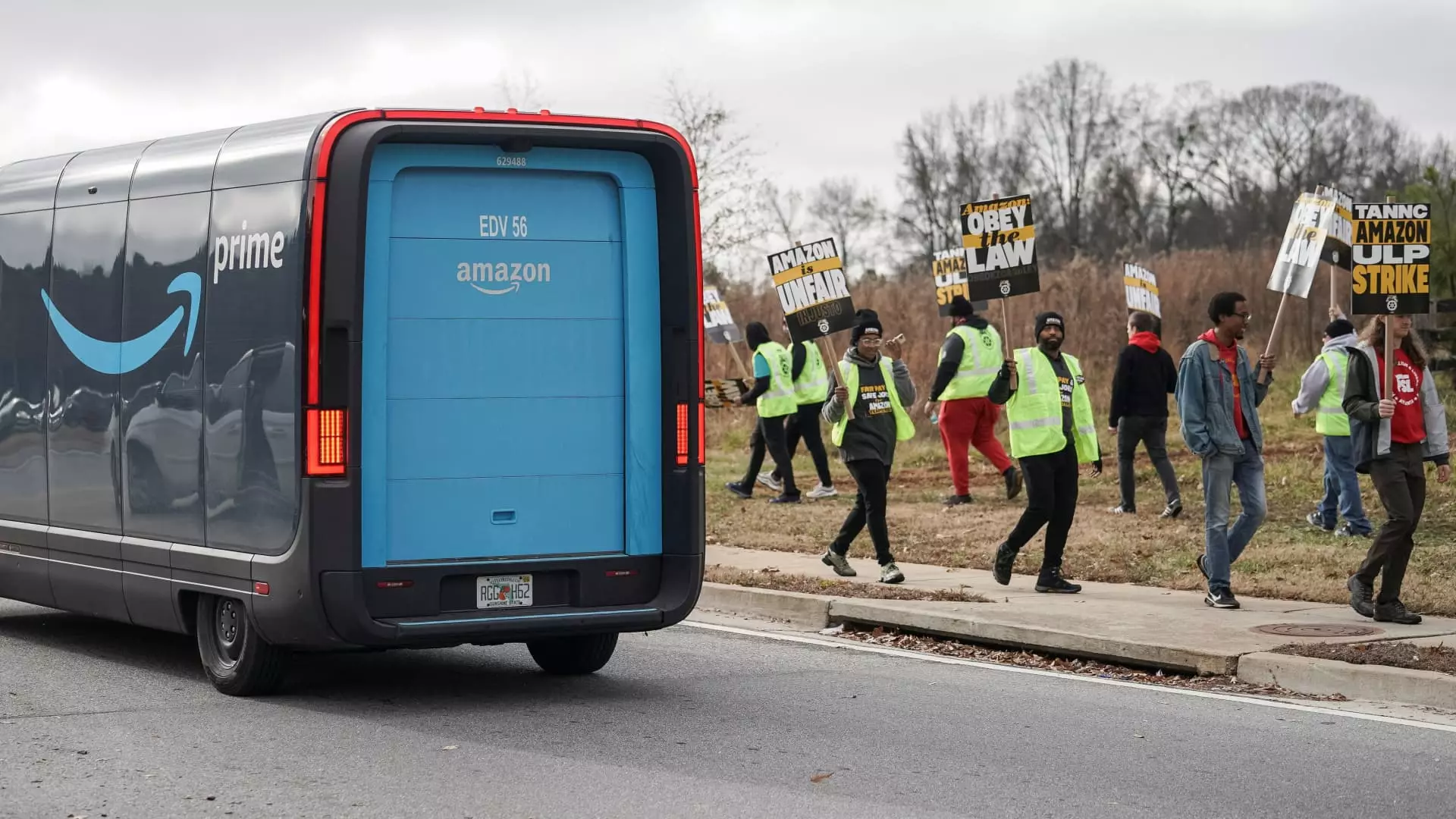On a notable Thursday, Amazon employees staged a significant strike across seven facilities in four states: New York, Georgia, California, and Illinois. Spearheaded by the Teamsters union, the strike is not merely a reaction to working conditions but a broader manifestation of persistent demands for improved wages, enhanced benefits, and a safer workplace. This unprecedented action is aimed at forcing Amazon to engage in fruitful discussions regarding labor contracts, particularly critical as the company gears up for the bustling holiday shopping season.
The implications of this strike extend beyond immediate workplace grievances. As the Teamsters laid out a clear ultimatum, urging Amazon to negotiate, the tension in the air was palpable. Union president Sean O’Brien underscored the risks consumers might face, indicating that any delay in holiday deliveries could be attributed to Amazon’s reluctance to address employee concerns. The underlying message is stark: the demands of workers should take precedence over corporate profits, especially during a time when consumer spending peaks.
In response to the strike, Amazon issued a statement that paints a different picture of the situation. According to the company, the Teamsters have been waging a yearlong “misinformation campaign,” claiming that the majority of those participating in the strike are not actual Amazon employees but rather outsiders. This attempt to discredit the organizing efforts has raised questions about the authenticity of union representation and the extent of employee support for the strike.
The company’s defense serves as a reminder of the ongoing battle between management and organized labor, revealing Amazon’s entrenched stance against unionization. Despite its assertions, the Teamsters claim nearly 10,000 Amazon workers have joined their ranks, though this number represents a mere fraction of the company’s 1.53 million employees. The statistics reveal an ongoing struggle for representation and the hurdles faced by those seeking to amplify their voices within a powerful corporation.
The Historical Context: A Shift in Labor Dynamics
This strike signifies a pivotal moment in labor relations within Amazon, aligning with a broader trend that has seen increased fervor for unionization across various sectors. The struggle for a unionized workforce gained traction in 2022 when Staten Island warehouse workers achieved a landmark vote to unionize. This victory was a substantial blow to Amazon’s anti-union narrative, fostering a newfound sense of motivation among workers across the nation.
Historically, Amazon has resisted unionization efforts through various tactics, including aggressive legal maneuvering and public relations campaigns. However, the recent surge in labor organizing heralds a changing landscape. The alliance between the Amazon Labor Union and the Teamsters exemplifies a strategic merging of grassroots movements and established union infrastructure, amplifying their collective bargaining power.
As the likelihood of negotiations looms, the outcome of this strike could have significant repercussions not just for Amazon, but for the labor movement as a whole. The contentious climate within the company could lead to new precedents in employee representation and corporate accountability. Workers, emboldened by collective action, may reshape the conversation around labor rights in a corporate environment, urging companies to prioritize human capital over profits.
Ultimately, this moment encapsulates a broader struggle within the workforce: the desire for dignity, respect, and equitable treatment. As the holiday season approaches, the stakes have never been higher for these workers, who seek not just immediate improvements but lasting changes to the fabric of their working conditions. Their fight may very well echo beyond the company’s walls, reverberating through the entire labor landscape in America.

